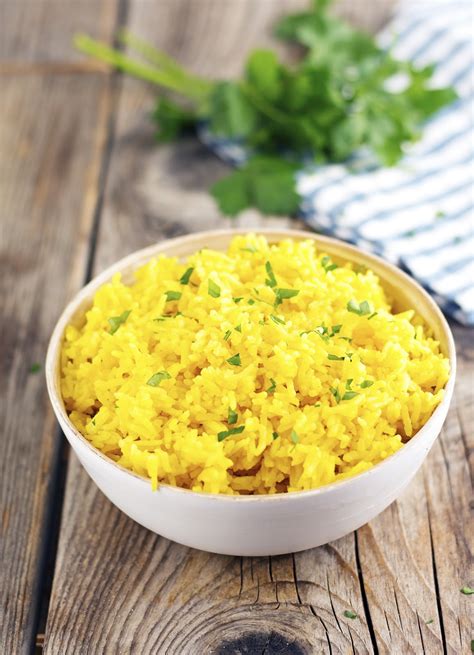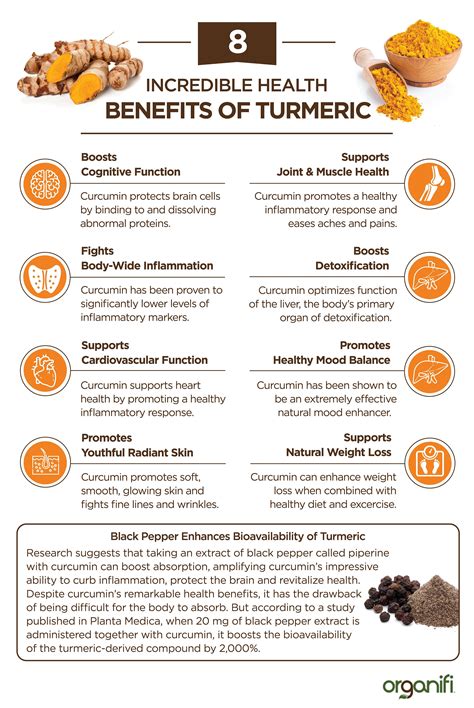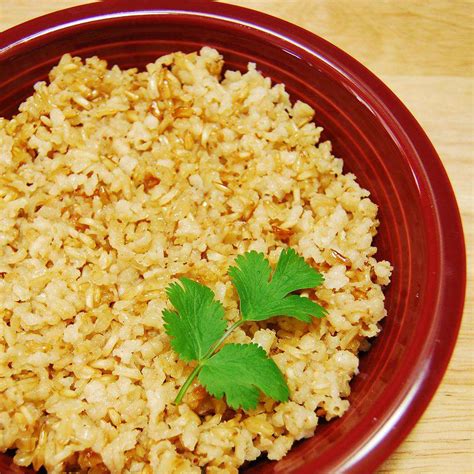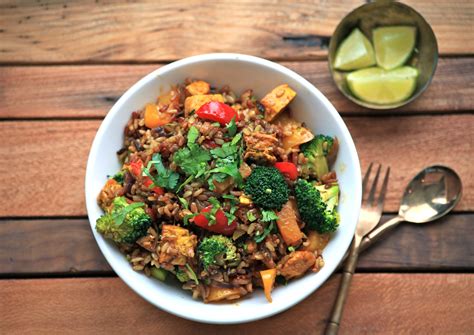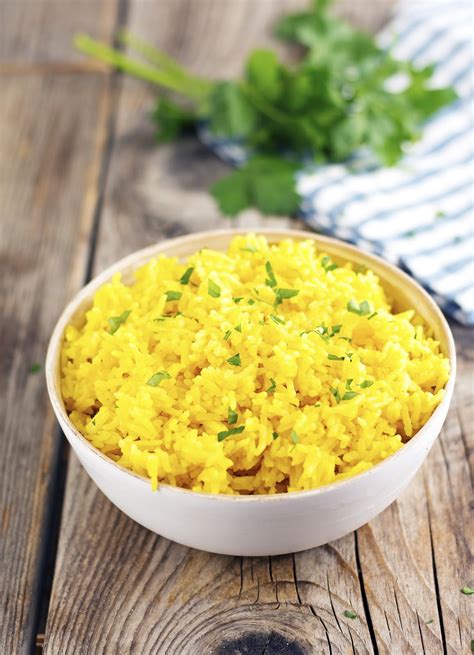Tantalizing Turmeric Rice - Delicious and Nutritious Recipe
Discover the perfect combination of health and taste with tantalizing turmeric rice—a dish that is both nutritious and bursting with flavor.
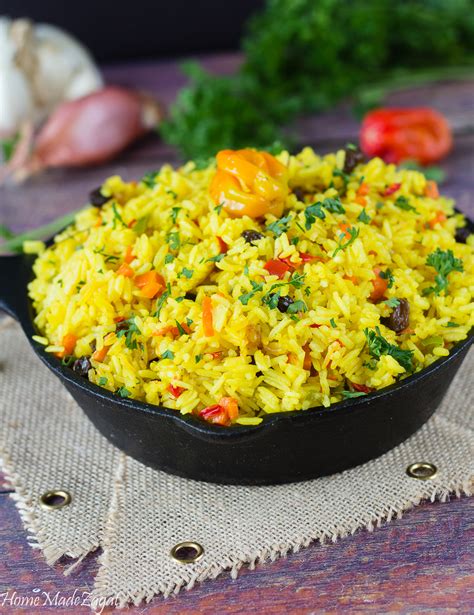
Looking for a dish that is both healthy and flavorful? Look no further than tantalizing turmeric rice! This vibrant and aromatic dish is not only a feast for the eyes but also a treat for the taste buds. Whether you are a rice aficionado or someone who wants to try something new, turmeric rice is a must-try.
What makes turmeric rice so special? The answer lies in the star ingredient – turmeric. Turmeric is a spice known for its vibrant yellow color and earthy flavor. It is commonly used in Indian and Middle Eastern cuisine and is lauded for its numerous health benefits. Not only does turmeric add a beautiful golden hue to the rice, but it also offers anti-inflammatory and antioxidant properties.
But turmeric is not the only player in this dish. Tantalizing turmeric rice is also seasoned with a blend of fragrant spices like cumin, coriander, and cardamom. The result is a harmonious blend of flavors that will transport you to distant lands with every bite. Whether you enjoy it as a side dish or as a main course, turmeric rice is sure to satisfy your cravings for something both healthy and delicious.
Whether you are a health-conscious individual or simply someone who appreciates good food, give tantalizing turmeric rice a try. With its mesmerizing colors, delightful flavors, and health benefits, this dish is a true winner. So, step out of your culinary comfort zone and embark on a flavorful adventure with turmeric rice. Your taste buds will thank you!
Common Deficiencies in Crohn's and Colitis
Crohn's disease and ulcerative colitis are chronic inflammatory bowel diseases that can lead to various nutritional deficiencies. These conditions affect the digestive system, impairing the body's ability to absorb nutrients from food. As a result, individuals with Crohn's and colitis often suffer from deficiencies in key vitamins, minerals, and other important nutrients.
One common deficiency in Crohn's and colitis is iron deficiency. This is because these conditions often cause gastrointestinal bleeding, leading to decreased iron absorption. Iron deficiency can lead to anemia, fatigue, and impaired immune function. It is important for individuals with Crohn's and colitis to regularly monitor their iron levels and take supplements if necessary.
Another common deficiency is vitamin D deficiency. Crohn's and colitis can affect the absorption of vitamin D, which is important for bone health, immune function, and overall well-being. Low levels of vitamin D can lead to weakened bones, muscle weakness, and increased risk of infections. Supplementation and regular sunlight exposure can help individuals with Crohn's and colitis maintain optimal vitamin D levels.
Calcium deficiency is also prevalent in individuals with Crohn's and colitis. These conditions can interfere with the absorption of calcium, which is essential for strong bones, proper nerve and muscle function, and blood clotting. Calcium supplementation, along with consuming calcium-rich foods such as dairy products, leafy greens, and fortified foods, can help prevent calcium deficiency.
Additionally, individuals with Crohn's and colitis may experience deficiencies in other nutrients, such as vitamin B12, folate, zinc, and omega-3 fatty acids. These nutrients play crucial roles in various body functions, including energy production, cell division, immune support, and inflammation regulation. Regular monitoring of nutritional status and working with a healthcare professional or registered dietitian can help prevent and manage these deficiencies.
| Nutrient | Deficiency Symptoms | Food Sources |
|---|---|---|
| Iron | Anemia, fatigue, weakened immune system | Red meat, beans, spinach, fortified cereals |
| Vitamin D | Weakened bones, muscle weakness, increased infection risk | Sunlight, fatty fish, fortified dairy products |
| Calcium | Weak bones, muscle cramps, blood clotting issues | Dairy products, leafy greens, fortified foods |
| Vitamin B12 | Fatigue, nerve damage, mood changes | Meat, fish, dairy products, fortified cereals |
| Folate | Anemia, weakness, poor growth | Green leafy vegetables, legumes, fortified grains |
| Zinc | Impaired immune function, delayed wound healing | Meat, shellfish, legumes, seeds, nuts |
| Omega-3 fatty acids | Inflammation, impaired brain function | Fatty fish, flaxseeds, chia seeds, walnuts |
Managing these deficiencies is crucial for individuals with Crohn's and colitis to maintain overall health and well-being. A balanced and nutrient-rich diet, along with appropriate supplementation and regular monitoring of nutrient levels, can help prevent and address these common deficiencies. Consulting with a healthcare professional or registered dietitian is recommended to develop an individualized nutrition plan that meets the specific needs of individuals with Crohn's and colitis.
Easy Gluten-Free Fried Rice with Chicken
Looking for a delicious and nutritious gluten-free meal? This easy gluten-free fried rice with chicken recipe is the perfect choice. Packed with flavor and made with wholesome ingredients, it's a healthy twist on a classic dish.
This recipe features tender chicken breast, crisp vegetables, and fragrant jasmine rice, all tossed together in a savory gluten-free sauce. The key ingredient that gives this dish its unique taste and vibrant color is turmeric, a spice known for its numerous health benefits.
Not only does turmeric add a delicious flavor to the fried rice, but it also provides powerful antioxidant and anti-inflammatory properties. This makes it an excellent choice for people with Crohn's or colitis, as these conditions can often be associated with inflammation in the digestive system.
To make this gluten-free fried rice, start by cooking the jasmine rice according to the package instructions. While the rice is cooking, heat some olive oil in a large skillet and add the chicken breast. Cook until the chicken is no longer pink in the center and then remove it from the skillet.
Next, add the diced vegetables to the skillet and cook until they are tender-crisp. You can use a mix of your favorite vegetables, such as bell peppers, carrots, and peas. Once the vegetables are cooked, add the cooked rice back into the skillet.
In a small bowl, whisk together gluten-free soy sauce, turmeric, garlic powder, and ginger. Pour the sauce over the rice and vegetables, and toss everything together until well combined. Cook for a few more minutes to allow the flavors to meld together.
This gluten-free fried rice with chicken is not only delicious, but also high in protein and packed with nutrients. It is a great option for anyone following a gluten-free or low-inflammatory diet, and it makes for a satisfying and filling meal.
So if you're in the mood for some flavorful and healthy comfort food, give this easy gluten-free fried rice with chicken recipe a try. You won't be disappointed!
Ingredients
In order to make this gluten-free fried rice with chicken recipe, you will need the following ingredients:
| Ingredient | Quantity |
| Gluten-free soy sauce | 3 tablespoons |
| Chicken breast, boneless and skinless | 2 cups, diced |
| Vegetable oil | 2 tablespoons |
| Eggs | 2, beaten |
| Garlic, minced | 3 cloves |
| Onion, diced | 1 medium |
| Carrots, diced | 1 cup |
| Green peas | 1 cup |
| Cooked rice, chilled | 4 cups |
| Green onions, chopped | 1/4 cup |
| Salt | To taste |
| Black pepper | To taste |
Make sure to gather all of these ingredients before starting the recipe.
Instructions
To make this easy gluten-free fried rice with chicken, follow these simple steps:
- In a large skillet or wok, heat the vegetable oil over medium heat.
- Add the diced chicken to the skillet and cook until it is cooked through and lightly browned. Remove the chicken from the skillet and set it aside.
- Add the diced onions, minced garlic, and grated ginger to the skillet. Cook until the onions are translucent and fragrant.
- Add the cooked rice to the skillet and mix well with the onions, garlic, and ginger.
- In a small bowl, whisk together the gluten-free soy sauce, rice vinegar, and turmeric powder. Pour this mixture over the rice in the skillet.
- Add the cooked chicken back to the skillet and mix well with the rice and sauce.
- Push the rice mixture to one side of the skillet and crack the eggs into the empty side. Scramble the eggs until cooked through, then mix them into the rice.
- Finally, add the frozen peas and carrots to the skillet and cook until heated through.
- Remove the skillet from heat and serve the gluten-free fried rice hot.
This easy gluten-free fried rice with chicken is a delicious and nutritious meal that can be enjoyed by anyone, regardless of dietary restrictions. With the flavors of turmeric, soy sauce, and ginger, this dish is both healthy and flavorful. Serve it as a main course or as a side dish with your favorite protein for a complete meal.
High Protein Gluten-Free Fried Rice
If you're looking for a delicious and nutritious gluten-free meal, this High Protein Fried Rice is the perfect choice. Packed with flavors and protein, it's a satisfying dish that is also easy to make.
Here's what you'll need:
- 2 cups cooked brown rice
- 1 cup cooked chicken breast, diced
- 1 cup mixed vegetables (carrots, peas, corn)
- 2 cloves garlic, minced
- 1 tablespoon gluten-free soy sauce
- 1 tablespoon olive oil
- 1 teaspoon sesame oil
- 1/2 teaspoon turmeric powder
- Salt and pepper to taste
- Chopped green onions for garnish
Instructions:
- Heat the olive oil in a large skillet over medium heat. Add the garlic and cook until fragrant.
- Add the cooked brown rice to the skillet and stir-fry for a few minutes.
- Add the mixed vegetables and diced chicken breast to the skillet. Stir-fry until the vegetables are tender and the chicken is cooked through.
- In a small bowl, mix together the gluten-free soy sauce, sesame oil, and turmeric powder.
- Pour the sauce over the rice mixture in the skillet and stir until everything is well combined.
- Season with salt and pepper to taste.
- Remove from heat and garnish with chopped green onions.
This High Protein Gluten-Free Fried Rice is not only delicious but also nutritious. The chicken provides a good source of protein, while the mixed vegetables add vitamins and minerals to the dish. The turmeric powder adds a vibrant color and a hint of earthy flavor. Serve it as a main dish or as a side with your favorite gluten-free entree. Enjoy!
Rice Recipes For Ulcerative Colitis
Ulcerative colitis is a chronic inflammatory bowel disease that affects the colon and rectum. It can be a challenging condition to manage, as certain foods can trigger symptoms and exacerbate inflammation. However, with proper dietary choices, it is possible to find delicious and nutritious meals that are safe for those with ulcerative colitis.
One such option is rice, which is generally well-tolerated and easy to digest. Rice is a great source of carbohydrates and provides a good amount of energy. It is also low in fiber, which can be beneficial for people with ulcerative colitis, as high-fiber foods can sometimes cause discomfort and flare-ups.
Here are a couple of rice recipes that are suitable for individuals with ulcerative colitis:
1. Tantalizing Turmeric Rice:
This flavorful and healthy dish combines the anti-inflammatory properties of turmeric with the soothing effects of rice. Turmeric contains curcumin, which has been shown to reduce inflammation in the body. To make this dish, simply cook rice as per the instructions and add turmeric powder, salt, and any other desired spices. Mix well and serve.
2. High Protein Gluten-Free Fried Rice:
This recipe is perfect for those looking to increase their protein intake while avoiding gluten. Start by cooking rice and set it aside. Then, in a separate pan, sauté vegetables like carrots, peas, and bell peppers. Once the vegetables are cooked, add cooked chicken or tofu for added protein. Finally, mix in the rice and season with gluten-free soy sauce or tamari. Cook everything together for a few minutes, and your high protein gluten-free fried rice is ready to enjoy.
These rice recipes provide a tasty and safe option for individuals with ulcerative colitis. Remember to listen to your body and make adjustments based on your personal tolerance levels. With a little creativity and attention to your diet, you can enjoy delicious meals without exacerbating your symptoms.
Turmeric Rice
Turmeric rice is a delicious and nutritious dish that incorporates the vibrant flavors of turmeric into a simple rice recipe. Turmeric is a spice commonly used in Asian cuisine and has many health benefits, including its anti-inflammatory and antioxidant properties.
To make turmeric rice, you will need the following ingredients:
- 1 cup of basmati rice
- 2 cups of water
- 1 teaspoon of turmeric powder
- 1 tablespoon of olive oil
- 1/2 teaspoon of salt (optional)
Instructions:
- Start by rinsing the basmati rice under cold water to remove any excess starch. Drain well.
- In a saucepan, heat the olive oil over medium heat. Add the turmeric powder and stir for a minute to release its flavors.
- Add the rinsed rice to the saucepan and stir to coat it with the turmeric-infused oil.
- Add the water and salt (if using) to the saucepan and bring to a boil.
- Reduce the heat to low, cover the saucepan, and let the rice simmer for about 15-20 minutes, or until all the water is absorbed and the rice is fully cooked.
- Once the rice is cooked, fluff it with a fork to separate the grains.
- Serve the turmeric rice as a side dish or as a base for your favorite protein or vegetable dishes.
Turmeric rice is not only flavorful but also packed with nutrients. Basmati rice is a good source of carbohydrates, while turmeric provides additional health benefits. This dish is gluten-free, making it suitable for individuals with gluten intolerance or celiac disease.
Try this turmeric rice recipe and enjoy a healthy and flavorful addition to your meals!
Fried Rice with Chicken Recipe: A Tasty and Gluten-Free Dish
Fried Rice with Chicken is a classic Asian dish that is loved by many. This recipe puts a twist on the traditional fried rice by making it gluten-free and flavorful.
Gluten-free diets have become increasingly popular in recent years, and for good reason. Many people have gluten sensitivities or celiac disease, an autoimmune disorder triggered by gluten consumption. For these individuals, it's essential to find delicious and satisfying gluten-free recipes.
This Fried Rice with Chicken recipe is a perfect option for those following a gluten-free diet. It uses tamari, a gluten-free soy sauce alternative, to add that familiar umami flavor to the dish. Additionally, the use of turmeric rice adds a vibrant color and boosts the dish's nutritional value.
To make this gluten-free fried rice, you will need the following ingredients:
- 2 cups of cooked turmeric rice
- 1 cup of cooked chicken breast, diced
- 1 cup of mixed vegetables (carrots, peas, corn)
- 2 cloves of garlic, minced
- 2 tablespoons of tamari sauce
- 1 tablespoon of sesame oil
- 2 eggs, beaten
- 1 tablespoon of olive oil
- Salt and pepper to taste
- Green onions for garnish
Now, let's move on to the instructions:
- Heat olive oil in a large skillet or wok over medium heat.
- Add minced garlic and sauté for about a minute until fragrant.
- Add the mixed vegetables and cook until they are tender.
- Push the vegetables to one side of the skillet and add the beaten eggs to the other side. Scramble the eggs until they are cooked through.
- Add the cooked chicken breast to the skillet and stir-fry for a few minutes until heated through.
- Add the cooked turmeric rice to the skillet and toss everything together.
- Drizzle tamari sauce and sesame oil over the rice mixture and stir to combine.
- Season with salt and pepper to taste.
- Garnish with chopped green onions.
- Serve hot and enjoy your delicious gluten-free Fried Rice with Chicken!
This gluten-free Fried Rice with Chicken recipe is not only easy to make but also packed with flavor. The combination of turmeric rice, chicken, and vegetables creates a balanced and satisfying dish that can be enjoyed by everyone, including those with gluten sensitivities.
Remember, you can always customize this recipe by adding your favorite ingredients or adjusting the seasonings according to your taste. So, get creative, have fun in the kitchen, and savor every bite of this gluten-free delight!
Fried Rice Variations for Different Dietary Needs
11. Fried rice is a versatile dish that can be easily adapted to accommodate various dietary needs. Here are some variations of fried rice that cater to different dietary requirements:
- Vegan Fried Rice: Substitute eggs and meat with tofu or plant-based protein alternatives. Use vegetable broth instead of chicken broth for added flavor.
- Low-sodium Fried Rice: Reduce the amount of soy sauce used and opt for low-sodium or gluten-free soy sauce. Increase the use of herbs and spices to enhance the flavor.
- Low-fat Fried Rice: Use minimal oil for stir-frying and choose lean protein sources such as chicken breast or shrimp. Add an abundance of vegetables for added fiber and nutrients.
- Diabetic-friendly Fried Rice: Substitute white rice with brown or cauliflower rice for a lower glycemic index. Limit the use of sweet sauces and add more non-starchy vegetables.
- Gluten-free Fried Rice: Use gluten-free soy sauce or tamari instead of regular soy sauce. Ensure that all ingredients used, including seasonings and sauces, are gluten-free.
- Paleo Fried Rice: Replace rice with cauliflower rice or spiralized vegetables for a grain-free option. Use coconut aminos instead of soy sauce to maintain the Paleo-friendly status.
These variations allow individuals with specific dietary needs, such as vegans, those on low-sodium or low-fat diets, diabetics, and those with gluten allergies or following a Paleo diet, to still enjoy the flavors and textures of a delicious plate of fried rice. Experiment with different combinations and ingredients to find the perfect fried rice variation that suits your dietary needs and taste preferences.
Some important questions about Tantalizing Turmeric Rice Recipe - A Delightfully Healthy and Flavorful Dish Perfect for Any Occasion:
How do I make turmeric rice?
To make turmeric rice, start by rinsing 1 cup of basmati rice until the water runs clear. Then, heat 1 tablespoon of oil in a pan and add 1 teaspoon of turmeric powder. Cook the turmeric powder for a minute and then add the rinsed rice to the pan. Stir well to coat the rice with the turmeric. Add 2 cups of water and bring it to a boil. Once it starts boiling, reduce the heat to low, cover the pan, and let the rice simmer for about 15-20 minutes or until cooked. Fluff the rice with a fork before serving.
What are the health benefits of turmeric rice?
Turmeric rice offers various health benefits. Turmeric contains a compound called curcumin, which has powerful anti-inflammatory and antioxidant properties. It may help reduce the risk of chronic diseases, including heart disease, diabetes, and certain types of cancer. Turmeric also has antibacterial and antiviral properties, which may help boost the immune system. Additionally, turmeric can aid in digestion and improve gut health. Overall, turmeric rice is a nutritious and flavorful option to add to your diet.
Can I use brown rice instead of white rice for turmeric rice?
Yes, you can use brown rice instead of white rice for turmeric rice. Brown rice is a whole grain and is considered healthier than white rice as it contains more fiber, vitamins, and minerals. When using brown rice, you may need to adjust the cooking time and the amount of water used. Brown rice generally requires more water and a longer cooking time compared to white rice. Follow the instructions on the package or refer to a recipe specifically for cooking brown rice.
What are some variations of turmeric rice?
There are several variations of turmeric rice that you can try. One option is to add vegetables like peas, carrots, or bell peppers to the rice while cooking to make it a complete and nutritious meal. You can also add spices like cumin, coriander, or cinnamon to enhance the flavor. Another variation is to use coconut milk instead of water to cook the rice, which adds a creamy and tropical taste. Feel free to experiment with different ingredients and flavors to create your own unique version of turmeric rice.
Is turmeric rice suitable for a vegan or vegetarian diet?
Yes, turmeric rice is suitable for both vegan and vegetarian diets. The dish is typically made with plant-based ingredients like rice, turmeric, and spices. It does not contain any animal products. However, if you plan to add any additional ingredients like vegetables or protein sources, make sure they are also vegan or vegetarian-friendly. Overall, turmeric rice is a versatile and delicious option for individuals following a vegan or vegetarian lifestyle.
What are the health benefits of turmeric?
Turmeric has numerous health benefits. It has anti-inflammatory properties, helps with digestion, boosts the immune system, and may even prevent certain types of cancer. It also acts as a natural pain reliever and can help with conditions like arthritis. Additionally, turmeric is high in antioxidants, which are beneficial for overall health.
What makes turmeric rice a healthy dish?
Turmeric rice is a healthy dish for several reasons. Firstly, turmeric itself is highly nutritious and contains beneficial compounds like curcumin, which has numerous health benefits. Additionally, the rice used in this dish provides essential carbohydrates and fiber. The other ingredients like onions, garlic, and vegetables also add to the nutritional value. Moreover, this dish is cooked with minimal oil and no unhealthy additives or preservatives, making it a wholesome and healthy option.
How can I make turmeric rice more flavorful?
You can make turmeric rice more flavorful by adding various spices and herbs. For example, you can include cumin seeds, cinnamon, cloves, or cardamom to enhance the taste. Additionally, you can also add a pinch of saffron threads to give it a rich and aromatic flavor. Another way to add more flavor is by using homemade vegetable or chicken broth instead of plain water when cooking the rice. Finally, you can garnish the dish with fresh cilantro or mint leaves to add a burst of freshness.

 mainadmin
mainadmin 